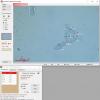
12-12-2025 18:39
Mirek GrycHello everyone.Macrofeatures similar to Mollisia b

09-12-2025 12:06
 Andgelo Mombert
Andgelo Mombert
Bonjour,Je recherche l'article concernant Hypobryo

07-12-2025 16:07
Arnold BüschlenHallo, ich habe in einer Moos-Aufsammlung (epiphy

08-12-2025 21:04
Mark Stevens"Hello everyone,I'm relatively new to microscopy (

08-12-2025 18:59
 Lothar Krieglsteiner
Lothar Krieglsteiner
.. found by a seminar-participant, I do not know t

08-12-2025 17:37
 Lothar Krieglsteiner
Lothar Krieglsteiner
20.6.25, on branch of Abies infected and thickened
Orange disks
Leif Goodwin,
14-10-2023 11:29
Someone suggested a Purpureodiscus species e.g. P. isabellinus.
Help appreciated.
Nicolas VAN VOOREN,
22-10-2023 11:19

Re : Orange disks
Macroscopically it looks like Purpureodiscus subisabellinus, but you should show some mature ascospores (in water). They measure 18.5-23.5 × 11-13 µm and show bipolar spore granules. The amyloid reaction of asci is only visible on the wall (W type), sometimes difficult to see.
Leif Goodwin,
13-11-2023 18:43
Re : Orange disks
Thank you for taking the time to reply, and apologies for my late response. I have given the specimen to someone who will amplify the ITS region of the DNA and then have it sequenced. When he returns it, I will try and find some mature spores. Hopefully the DNA sequencing will give us an answer, but sadly DNA does not always amplify, possibly because the primers are not ideal for ascos.


